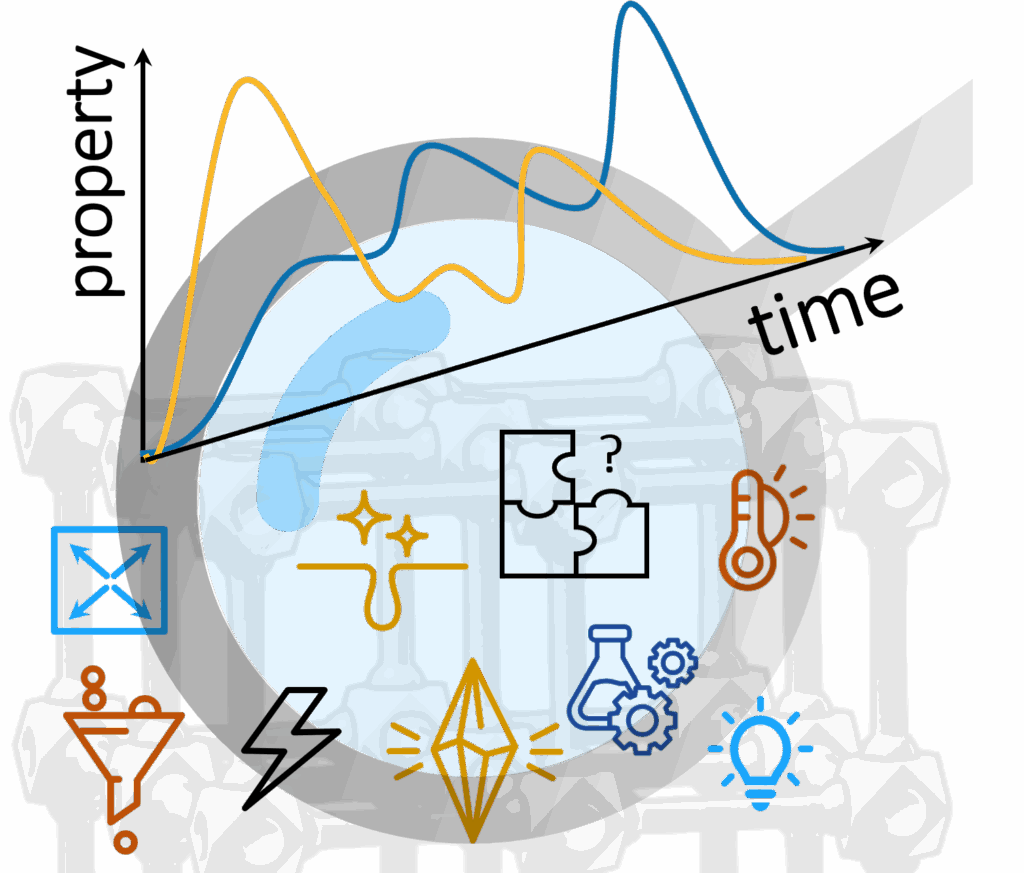
Advancements in Understanding the Physicochemical Properties of Reticular Materials: An In Situ and Operando Spectroscopic Perspective
This review highlights how in situ and operando spectroscopic and scattering techniques are advancing our understanding of reticular materials such as MOFs and COFs. By probing these porous frameworks under working conditions, researchers can track active sites, reaction intermediates, and structural dynamics during catalysis, gas adsorption, and photochemical processes. The article surveys recent progress across characterization methods, discusses how these insights inform synthesis and design, and points to opportunities for developing more efficient materials for energy and environmental applications.
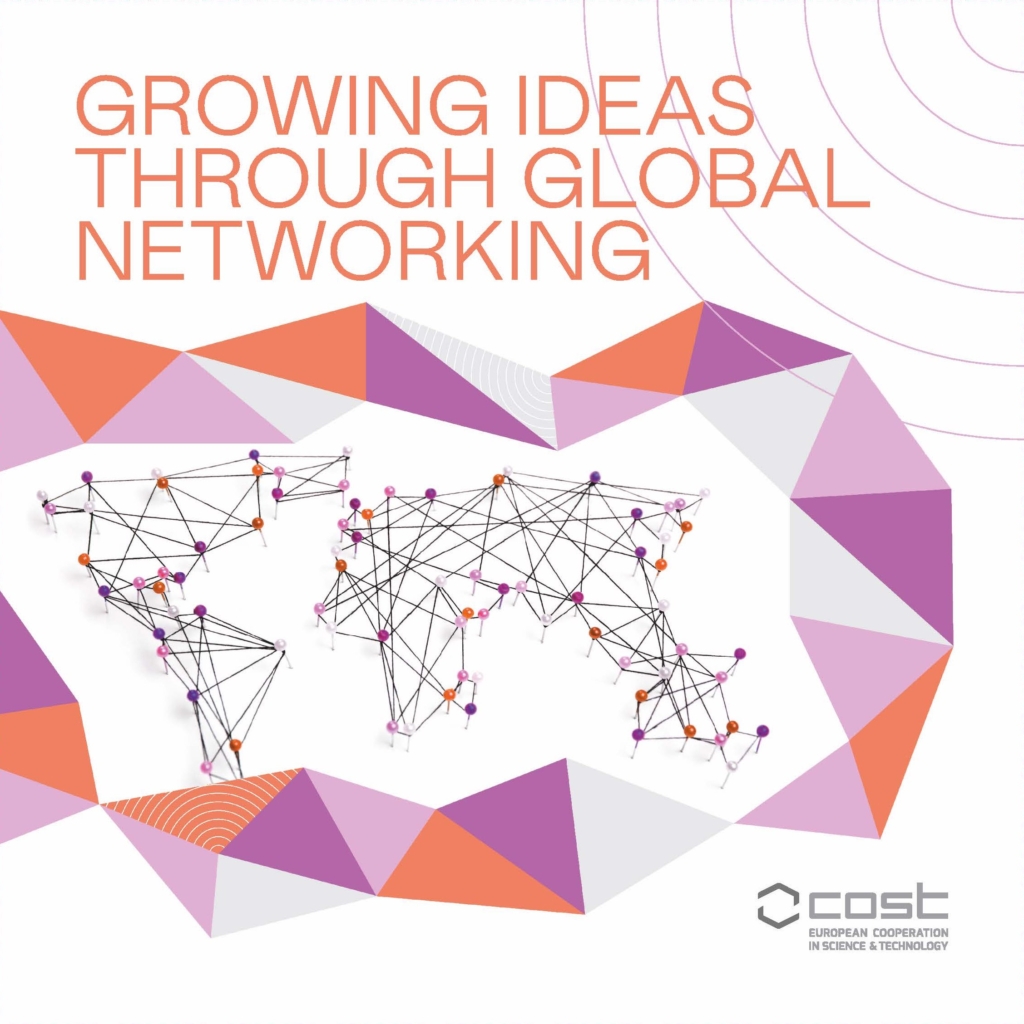
Growing Ideas Through Global Networking
Guidance for researchers and innovators in Near Neighbour Countries and Third/International Partner Countries. This publication explains how to get involved in COST Actions and what opportunities are available.
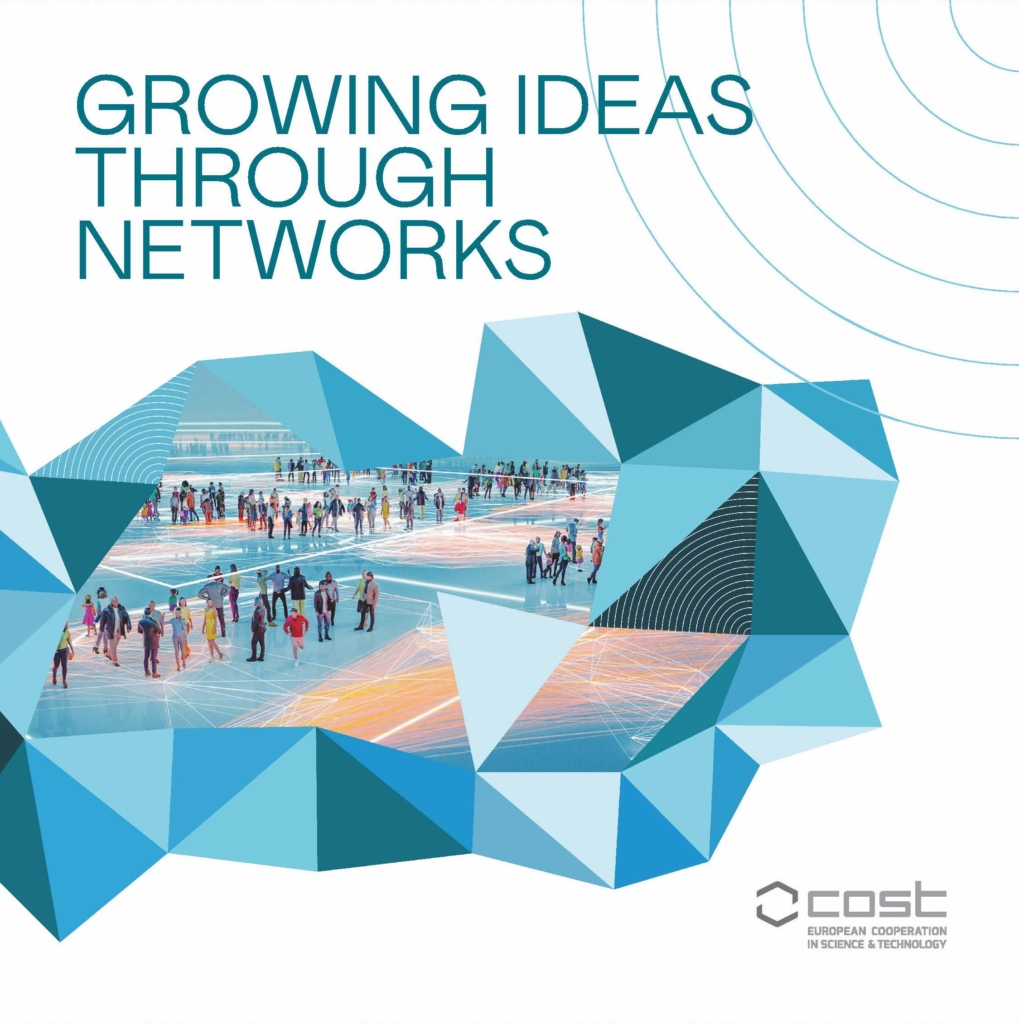
Growing Ideas Through Networks
The COST corporate publication ‘Growing ideas through networks’ explains the COST Programme and COST Actions, including how they operate, who they are for, and how to propose or join an Action.
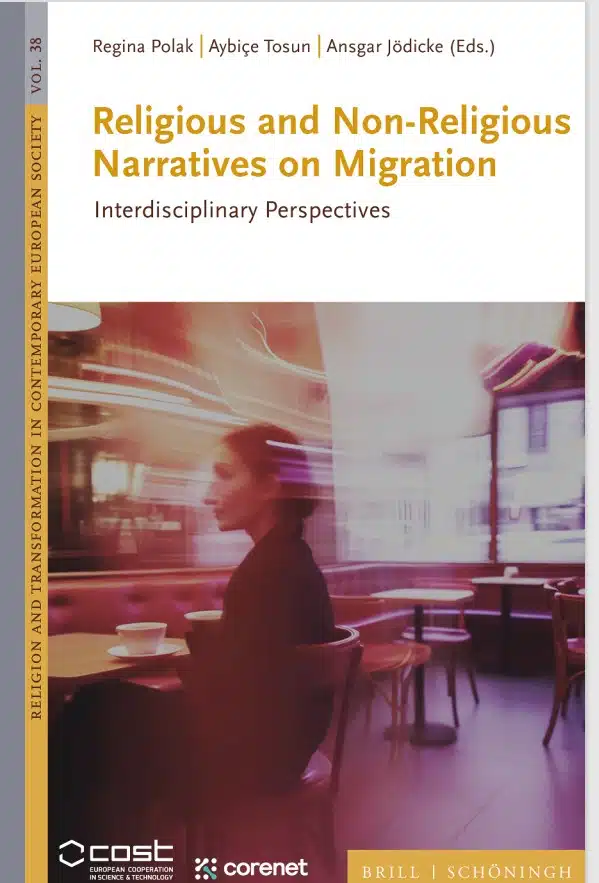
Religious and Non-Religious Narratives on Migration
ISBN:978-3-657-79795-0
The book emerges from COST Action COREnet, a European research network initiated in 2021 that connects theory and practice in the field of migration and religious diversity. Over the course of several years, COREnet scholars from diverse disciplines and cultural contexts engaged in collaborative research, dialogical formats, and innovative methodologies to critically analyse how narratives influence migration experiences and to explore the role of religion and secular worldviews in these processes.
One of the most innovative aspects of the volume is its methodological emphasis on listening to the voices of migrants themselves. To facilitate this, the network developed and implemented the concept of “narrative cafés.” These dialogical spaces allowed migrants to share their personal stories in a supportive, interactive environment, thereby highlighting their lived experiences beyond abstract political or academic debates.
By bridging theoretical frameworks and practical concerns, Religious and Non-Religious Narratives on Migration offers scholars, policymakers, and practitioners critical tools for engaging migration in ways that are both academically rigorous and socially constructive.
The volume will be of particular interest to researchers in theology, sociology, philosophy, and education, as well as policymakers and organisations working in the fields of migration, integration, and interreligious dialogue.
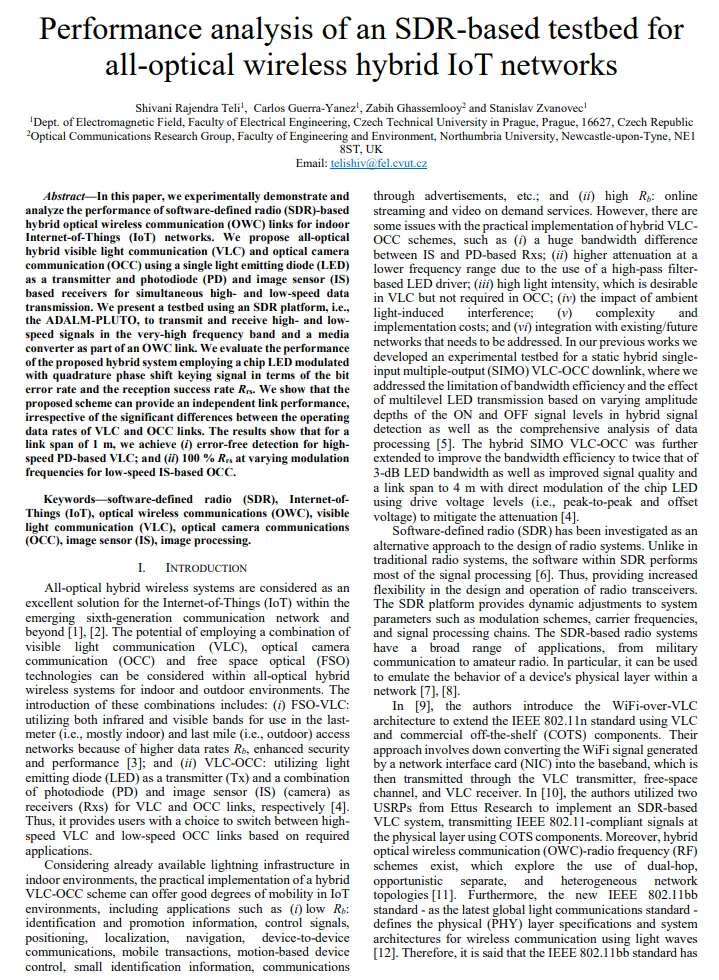
Performance Analysis of an SDR-Based Testbed for All-Optical Wireless Hybrid IoT Networks
https://10.1109/CCNC54725.2025.10975919
In this paper, we experimentally demonstrate and analyze the performance of software-defined radio (SDR)-based hybrid optical wireless communication (OWC) links for indoor Internet-of-Things (IoT) networks. We propose all-optical hybrid visible light communication (VLC) and optical camera communication (OCC) using a single light emitting diode (LED) as a transmitter and photodiode (PD) and image sensor (IS) based receivers for simultaneous high-and low-speed data transmission. We present a testbed using an SDR platform, i.e., the ADALM-PLUTO, to transmit and receive high-and low-speed signals in the very-high frequency band and a media converter as part of an OWC link. We evaluate the performance of the proposed hybrid system employing a chip LED modulated with quadrature phase shift keying signal in terms of the bit error rate and the reception success rate Rrs. We show that the proposed scheme can provide an independent link performance, irrespective of the significant differences between the operating data rates of VLC and OCC links. The results show that for a link span of 1 m, we achieve (i) error-free detection for high-speed PD-based VLC; and (ii) 100 % Rrs at varying modulation frequencies for low-speed IS-based OCC.
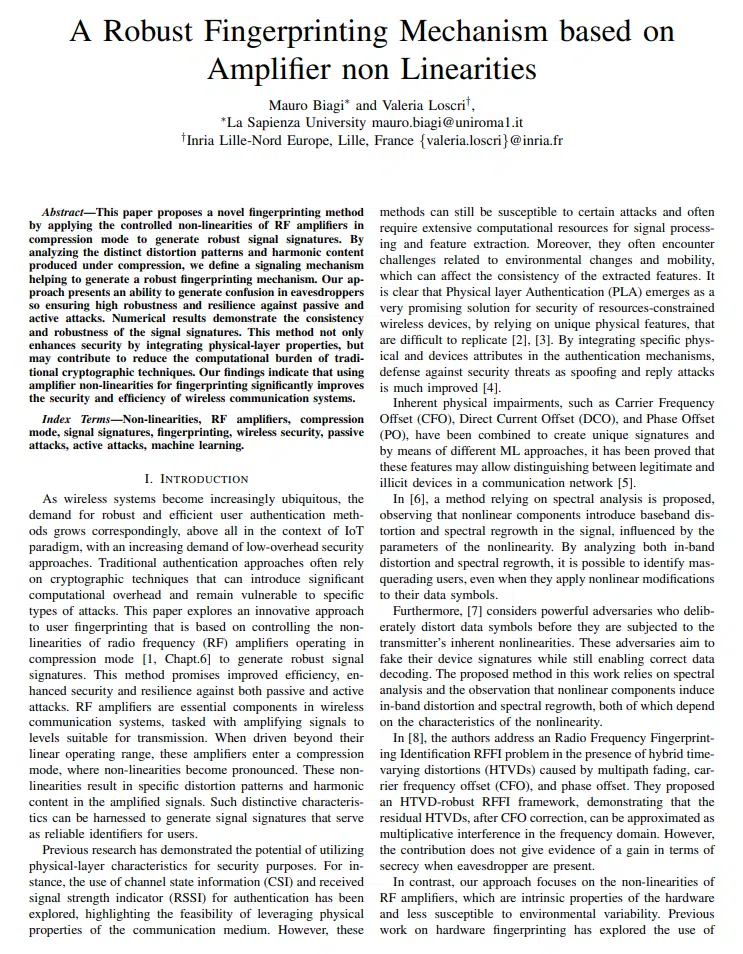
A Robust Fingerprinting Mechanism based on Amplifier non Linearities
https://10.1109/EuCNC/6GSummit63408.2025.11037077
This paper proposes a novel fingerprinting method by applying the controlled non-linearities of RF amplifiers in compression mode to generate robust signal signatures. By analyzing the distinct distortion patterns and harmonic content produced under compression, we define a signaling mechanism helping to generate a robust fingerprinting mechanism. Our approach presents an ability to generate confusion in eavesdroppers so ensuring high robustness and resilience against passive and active attacks. Numerical results demonstrate the consistency and robustness of the signal signatures. This method not only enhances security by integrating physical-layer properties, but may contribute to reduce the computational burden of traditional cryptographic techniques. Our findings indicate that using amplifier non-linearities for fingerprinting significantly improves the security and efficiency of wireless communication systems.
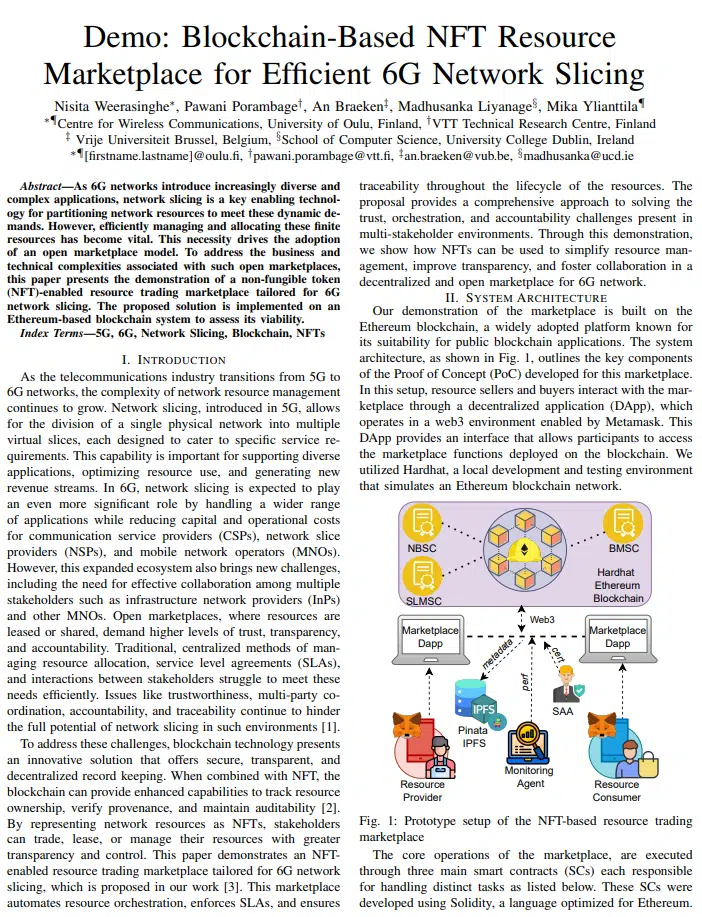
Blockchain-Based NFT Resource Marketplace for Efficient 6G Network Slicing
https://10.1109/CCNC54725.2025.10976071
As 6G networks introduce increasingly diverse and complex applications, network slicing is a key enabling technology for partitioning network resources to meet these dynamic demands. However, efficiently managing and allocating these finite resources has become vital. This necessity drives the adoption of an open marketplace model. To address the business and technical complexities associated with such open marketplaces, this paper presents the demonstration of a non-fungible token (NFT)-enabled resource trading marketplace tailored for 6G network slicing. The proposed solution is implemented on an Ethereum-based blockchain system to assess its viability.
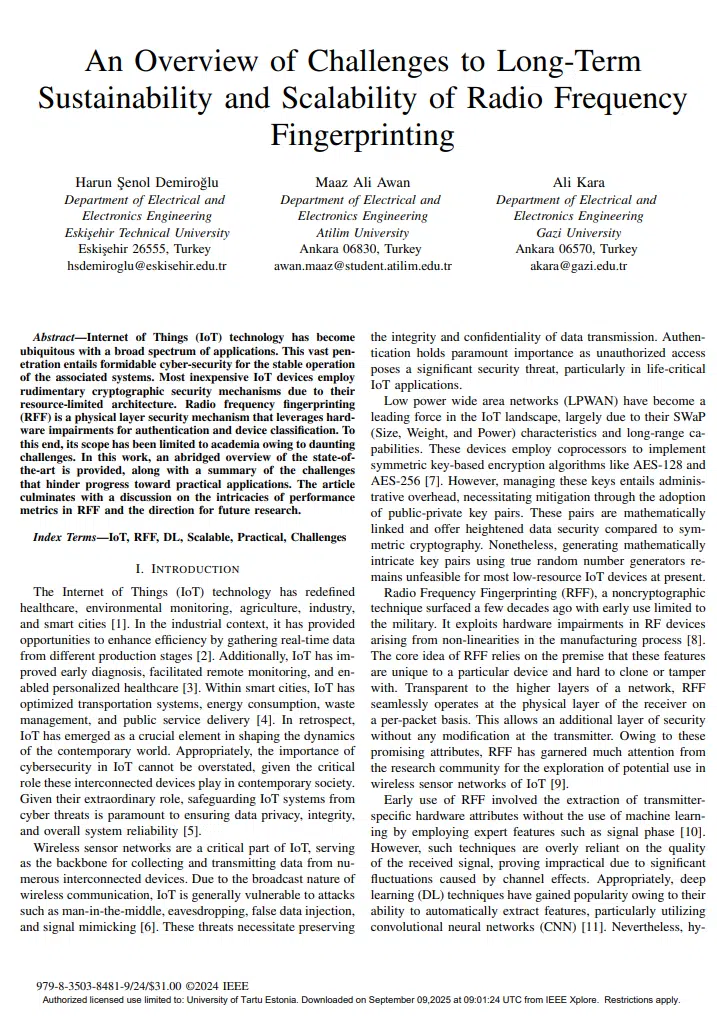
An Overview of Challenges to Long-Term Sustainability and Scalability of Radio Frequency Fingerprinting
https://10.1109/ICCSPA61559.2024.10794273
Internet of Things (IoT) technology has become ubiquitous with a broad spectrum of applications. This vast penetration entails formidable cyber-security for the stable operation of the associated systems. Most inexpensive IoT devices employ rudimentary cryptographic security mechanisms due to their resource-limited architecture. Radio frequency fingerprinting (RFF) is a physical layer security mechanism that leverages hardware impairments for authentication and device classification. To this end, its scope has been limited to academia owing to daunting challenges. In this work, an abridged overview of the state-of-the-art is provided, along with a summary of the challenges that hinder progress toward practical applications. The article culminates with a discussion on the intricacies of performance metrics in RFF and the direction for future research.
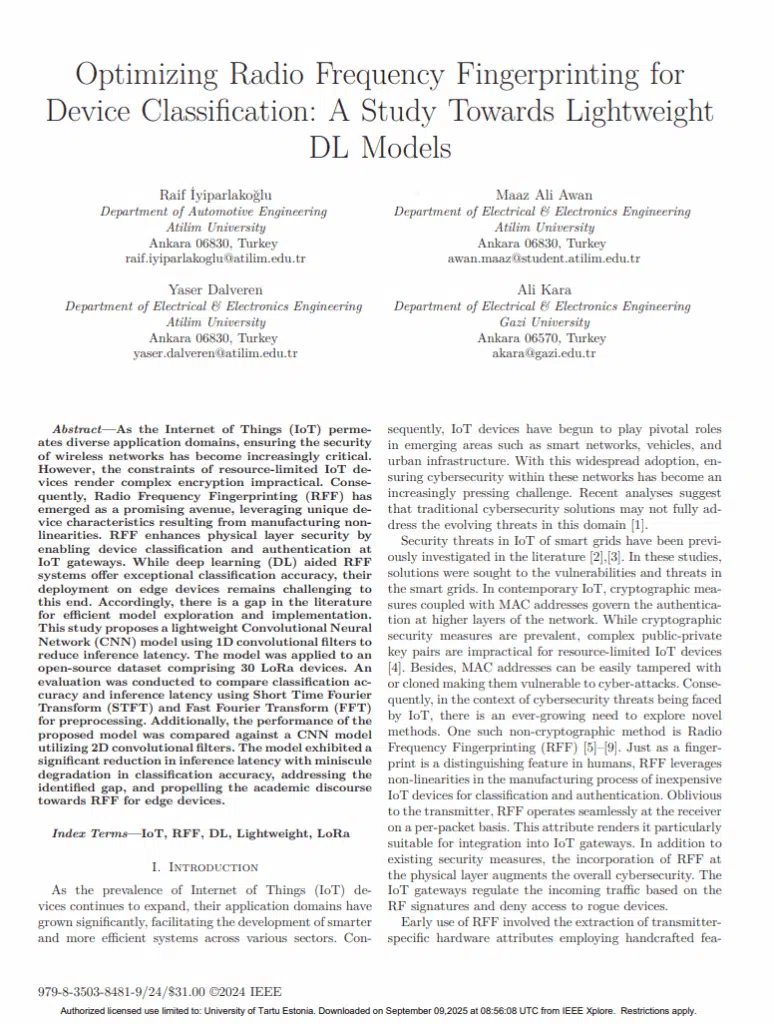
Optimizing Radio Frequency Fingerprinting for Device Classification: A Study Towards Lightweight DL Models
https://10.1109/ICCSPA61559.2024.10794386
As the Internet of Things (IoT) permeates diverse application domains, ensuring the security of wireless networks has become increasingly critical. However, the constraints of resource-limited IoT devices render complex encryption impractical. Consequently, Radio Frequency Fingerprinting (RFF) has emerged as a promising avenue, leveraging unique device characteristics resulting from manufacturing nonlinearities. RFF enhances physical layer security by enabling device classification and authentication at IoT gateways. While deep learning (DL) aided RFF systems offer exceptional classification accuracy, their deployment on edge devices remains challenging to this end. Accordingly, there is a gap in the literature for efficient model exploration and implementation. This study proposes a lightweight Convolutional Neural Network (CNN) model using 1D convolutional filters to reduce inference latency. The model was applied to an open-source dataset comprising 30 LoRa devices. An evaluation was conducted to compare classification accuracy and inference latency using Short Time Fourier Transform (STFT) and Fast Fourier Transform (FFT) for preprocessing. Additionally, the performance of the proposed model was compared against a CNN model utilizing 2D convolutional filters. The model exhibited a significant reduction in inference latency with miniscule degradation in classification accuracy, addressing the identified gap, and propelling the academic discourse towards RFF for edge devices.
